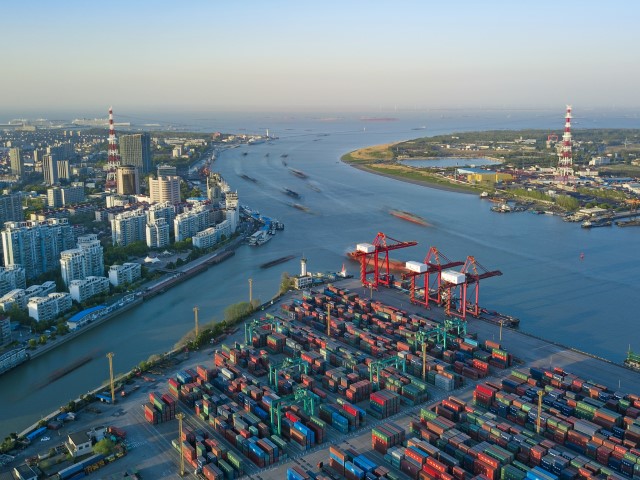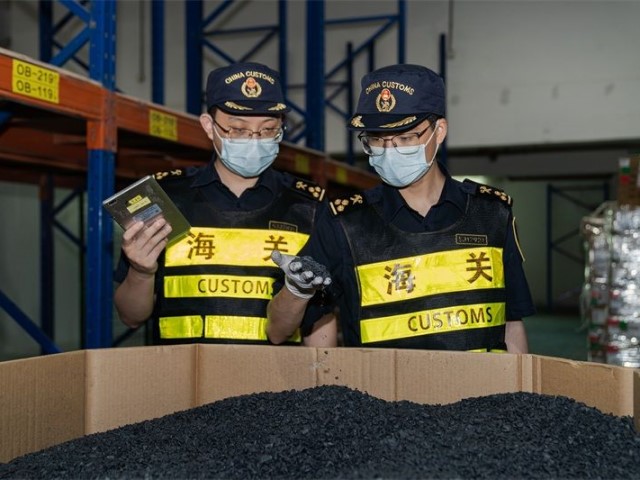The container shipping market entered the traditional peak season of the third quarter, with the severe congestion of the Panama Canal due to drought, Shanghai's export container freight index (SCFI) rose for three consecutive weeks.
According to the latest information released by the Shanghai Shipping Exchange on August 11, the SCFI index continued to rise 4.22 points to 1043.54 points last week, narrowing the weekly increase from 0.9% in the previous week to 0.4%. Among the main far-end routes, the freight rate of the Far East to the West of the United States and the Far East to the East of the United States continued to rise.
Among them, the freight rate per FEU from the Far East to the West continued to be 15 US dollars to 2,017 US dollars, a weekly increase of 0.74%. The freight rate of the Far East to the United States East line increased by 58 US dollars per FEU to 3,071 US dollars, a weekly increase of 1.92%. European freight rates continued to fall, falling by 21 US dollars per TEU to 926 US dollars, or 2.21%. The Mediterranean line freight rate also turned negative again, down 22 US dollars per TEU to 1,507 US dollars, down 1.43% on the week.
In terms of the ocean lines, the Far East to Japan's Kansai and Kanto per TEU freight fell by 7 US dollars and 2 US dollars, respectively from the previous week, the Far East to Southeast Asia per TEU freight fell by 3 US dollars compared with the previous week, and the Far East to South Korea per TEU freight fell by 8 US dollars.
Industry insiders said that due to the recovery of goods in the peak season, the amount of goods in the United States is more than that of the European line, and the Panama Canal congestion phenomenon in the eastern line of the United States has caused the continued rise of the United States line freight. On the other hand, the European market demand is still sluggish, and the new 20,000 boxes of ultra-large ships are delivered and operated successively, resulting in European line freight rates easy to fall and difficult to rise.
In addition, with the arrival of the traditional peak season, shipping companies reduce voyage, a number of consolidation giants have increased freight rates. Maersk and CMA in July-August twice increased the European and North American line freight. HPL recently announced to increase some route freight after August 15, and Peak Season Surcharge for North American line will be imposed from September 1st, 600 US dollars per FEU and 400 US dollars per TEU from East Asia to North America line.
Due to the drought affecting the Panama Canal since this spring, and the congestion situation is becoming more and more serious, it will affect the dry bulk cargo and container ship capacity.
Due to the drought affecting the depth of water, the Panama Canal Authority recently announced that the number of vessels passing through the Panama Canal will be reduced from 36 to 32 per day until 2024. The Panama Canal authority also imposed load limit in July, requiring passing ships to reduce their weight by 40%. At the end of July, the Panama Canal Authority temporarily reduced the number of scheduled passes for Panamax vessels from August 8th to 21th, reducing the number of scheduled passes from 23 to 14 per day. The Panamax can carry 4,500 standard containers (TEUs). There were 161 merchant vessels waiting in line to pass around the Panama Canal until August 10th, up from about 90 in the past rainy season, and the average waiting period on the Panama Canal is said to be more than 21 days.
The Panama Canal is an important trade waterway for cargo vessels from the West coast of the United States to the Gulf of Mexico and the east coast ports, and is an important hub for US trade. 40% of the annual volume of goods, worth about 270 billion US dollars, must be transported through the Panama Canal. Once there's congestion, the goods in the East of the United States have to be changed to cross the Suez Canal, increased transit times up to 7-14 days and fuel costs are more likely to be passed on to customers and consumers.







